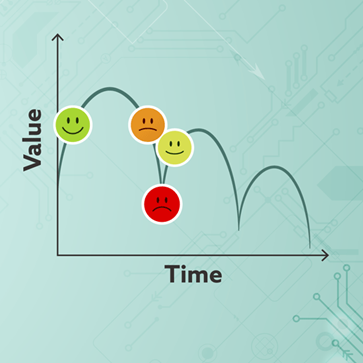
How Walter's vacation time could threaten a million-dollar business
Jonathan Dalle - July 19, 2023

I've always been fascinated by a curious phenomenon associated with critical business software. You know, that one software genius who possesses irreplaceable knowledge, upon whom the entire operation depends. Let's call this person Walter.
It's astonishing how a billion-dollar company can be so reliant on just one person to keep things running smoothly. So, what would happen if Walter decided to take a vacation?
Operational efficiency drops when Walter is absent
Blog post
I had the opportunity recently to visit a company where Walter was the backbone of the supply chain planning department. He was the last remaining member of a team of pioneers who had devised a spreadsheet-based planning application back in the early 2000s. Initially, their brainchild had worked like a charm, and the team took pride in having developed it.
Over time, they updated the code, customized frameworks, and built data integrations on top of the original application to respond to evolving requirements. Each developer had their own way of documenting, whether through in-line comments in the code, technical documentation, or even handwritten notes.

Blog post
Fast forward 20 years and most of Walter’s colleagues have retired or moved on, leaving him as the only person to really understand the system and the processes behind it. He still needs to create supply plans but doesn’t have any time left to train other people, let alone improve the planning system or provide accurate documentation. And there’s more. Walter’s vacation planning is now a business-critical issue. Why? Because he’s the only person who can optimize production lines, which is essential, especially whenever there’s peak demand.
Critical applications need adequate budgets for follow-up programs
Now, don’t get me wrong, I’m not saying that this is because the company foolishly relied on legacy DIY software. The same thing can happen with professional business software if the risk of disappearing knowledge is not properly addressed. It’s crucial that senior management recognize the critical importance of this kind of software and set aside an appropriate budget for knowledge sharing, including comprehensive training and documentation. And team leaders should allow their people enough time to get this done.
The supply chain planning context is also experiencing constant change. Market dynamics evolve, company strategies diverge, regulations come and go, and the need for swift responses to demand calls for smart automated solutions. And the IT landscape changes too. All this means that the planning solution needs to be developed further, users need to be trained, and accurate documentation needs to be put in place.
Investing in documentation and training
Blog post

Investing in top-notch documentation and training should be an absolute priority. Experienced planners should have dedicated time built into their schedules to work on it, and to train junior staff, possibly with the help of technical writers. I would even recommend setting up an in-house center of excellence with specialist staff taking responsibility for documentation and knowledge sharing.
All this is because high-quality documentation and a robust center of excellence drive continuous improvement. They empower individuals to understand the reasoning behind the system’s configuration and allow them space to critically reflect on how it can be improved. They also help to onboard talent and keep them motivated, which is extremely important in an era of labor shortages.
Blog post
A comprehensive documentation and knowledge-sharing process could help new users grasp the broader context of the application. It would also mean that planners gain confidence, grow into their roles, create better plans, and ultimately add more value to the organization. And, let’s not forget, Walter will be happy too. Talk about a great return on investment!
Want to learn more about how to use business-critical software to secure knowledge management within your supply chain organization?

Jonathan Dalle
Presales Architect at OMP USA
Biography
Being primarily involved in the early stages of projects, Jonathan enjoys collaborating closely with customers to shape a supply chain planning solution that meets their current needs and future aspirations.




